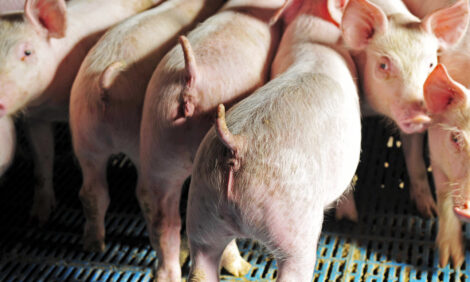



Separate Farm Bills Passed by House and Senate
US - Both the Senate and House Agriculture Committees last week passed their version of a 2013 farm bill, reports the National Chicken Council (NCC).After more than 10 hours of debate late last evening, the House Agriculture Committee approved on a 36-10 vote a 5-year farm bill, which is almost identical to a measure that was passed last year. The Federal Agriculture Reform and Risk Management Act of 2013, H.R. 1749, will cost about $940 billion over the next decade, cutting about $40 billion from direct spending. House leadership has committed to having the bill on the floor in June.
Earlier this week, the Senate Committee on Agriculture, Forestry and Nutrition also passed a farm bill entitled The Agriculture Reform, Food and Jobs Act of 2013, S. 945. On a vote of 15-5, the bill took less than four hours to be marked up and approved. The bill will cut $23 billion over 10 years. Majority Leader Harry Reid (D-NV) has scheduled the bill to be on the Senate floor today, 20 May.
Highlights of the two bills are as follows:
The House-Passed Farm Bill (H.R. 1749)
Passed: An amendment cosponsored by Reps. Mike Conaway (R-TX) and Jim Costa (D-CA) that repeals the section of the 2008 farm bill that directed USDA’s Grain Inspection and Packers and Stockyards Administrations (GIPSA) to review contract and industry structure practices of the meat and poultry industries. The amendment passed on a voice vote and members of the committee on both sides of the aisle spoke in support of the amendment. Ranking Member Collin Peterson (D-MN) said: "The department overreached. This amendment probably overreaches in the other direction. But maybe this is a lesson not to overreach. So I am going to support this amendment."
Passed: An amendment sponsored by Rep. Rick Crawford (R-AR) that would restrict USDA’s Animal and Plant Health Inspection Service (APHIS) from making any changes to the National Poultry Improvement Plan (NPIP). The amendment would keep the physical location of NPIP the same, as well as the current structure. The funding level was set at the current level, as well, but with language on NPIP in both House and Senate bills, a chance to tweak the language is possible.
Passed: An amendment sponsored by Rep. Steve King (R-IA) that would make it illegal for a state to restrict sales of products based on production standards. The amendment says that states cannot set regulations on agricultural product methods and apply them to goods coming in from other states. The amendment generated debate over whether it would undermine states’ rights and have implications for other state regulations. The amendment passed on a voice vote.
Passed: Rep. Jim McGovern (D-MA) offered an amendment that would make it a federal offense to attend an animal fighting venture or cause a minor to attend. The amendment passed 28 to 17.
Passed: Rep. Bob Gibbs (R-OH) sponsored an amendment that would prevent federal agencies from giving out personal information of agricultural producers to third-party groups. This amendment is a result of the Environmental Protection Agency’s recent release of data from livestock operations to three environmental groups. The data release, which came about as a result of a Freedom of Information Act request, has gained traction on Capitol Hill. On the Senate side, Senator Chuck Grassley (R-IA) filed a similar amendment to the farm bill, but it was not debated during mark up. It is likely that Senator Grassley will revisit the issue during the Senate floor debate.
Passed: Rep. Bob Goodlatte (R-VA) sponsored a provision that would require USDA to undertake reviews of any EPA regulations that could affect the agricultural community. Goodlatte said that the amendment was in response to EPA’s recent program for the Chesapeake Bay, which required states to develop and put in place plans to reduce nutrient runoff into the bay.
Passed: Rep. Vicki Hartzler (R-MO) sponsored an amendment that would repeal the USDA catfish inspection program and transfer the duties to the Food and Drug Administration, which inspects all other species of fish. USDA says the program could cost millions of dollars, but lawmakers with catfish constituents say that USDA inspection is necessary in the face of concerns over the safety and environmental implications of overseas catfish.
The House bill also contained several provisions aimed at deflecting the impact of U.S. Environmental Protection Agency (EPA) regulations on farmers and ranchers.
The Senate-Passed Farm Bill (S.945)
Passed: A measure that would establish the position of Under Secretary of Agriculture for Trade and Foreign Agriculture Affairs. Approved as part of a large group of amendments, the measure would propose a USDA reorganization of international trade function for imports and exports. The Under Secretary would serve as a multiagency coordinator of sanitary and phytosanitary issues and nontariff trade barriers in agriculture.
Passed: Language that supports keeping the current Governance Committee at the National Poultry Improvement Plan (NPIP) was included in a package of amendments. Since both bills contain language on NPIP, technical corrections can be made to the measure.
Passed: To address the shortfall in federal investments supporting the animal sciences, the National Association for the Advancement of Animal Science created the Animal Agriculture Integrated Research initiative (AAIR). AAIR will highlight three key focal areas–food security, animal health and stewardship.
Passed: Poultry Insurance Program establishes a pair of studies on the feasibility of insurance programs to protect America’s poultry growers from catastrophic loss, such as disease outbreaks and from bankruptcies of poultry integrators.
Both bills contain identical language on both the Market Access Program, funded at $200 million, and the Foreign Market Development, funded at $34.5 million, which is at current levels. The Conservation Reserve Program will gradually be reduced from 30 million acres to 25 million acres.






